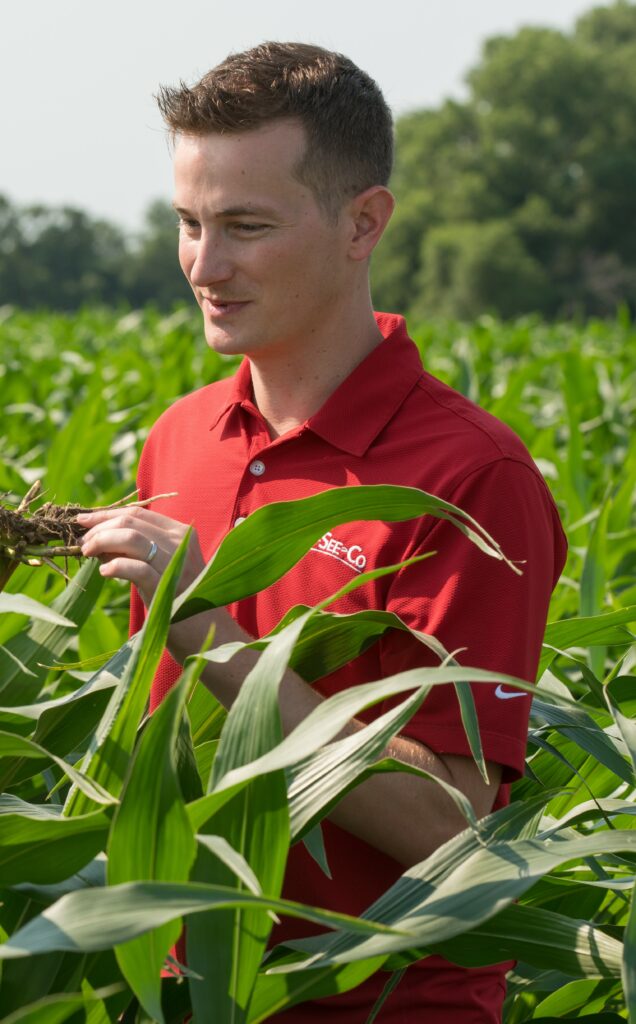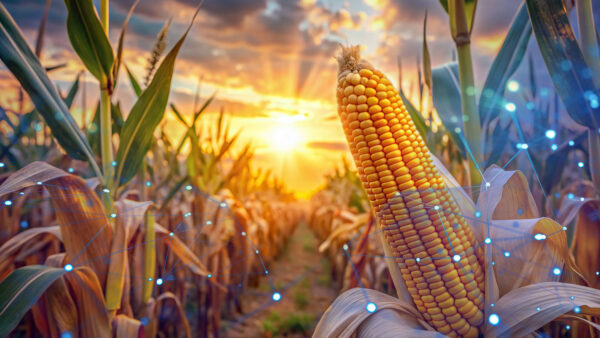How an aging agricultural workforce impacts messaging.
If farmers are getting older, agribusiness companies have to get wiser, because better understanding their customers leads to better communication.
The average age of all U.S. farm producers in 2017 was 57.5 years, up 1.2 years from 2012. Looking back even farther, today’s farmer is, on average, 9.7 years older than he or she was in 1945.
It is important to note that the average age of farmers isn’t aging much faster than the U.S. general population. In 2012, the medium age was 37.4, and in 2017, it was 38.
Carl Zulauf, a professor in the Department of Agricultural, Environmental and Development Economics at Ohio State University, compares this shift to a slow-moving glacier, and doesn’t necessarily see the rising age of farmers as a major problem.
“I don’t mean to say that there aren’t issues we need to discuss, but I think we should be celebrating the age of farmers and that farmers want to continue to work,” Zulauf says.
He says he rarely speaks with a farmer who actually wants to retire.
“They truly love farming. They don’t want to stop working,” he says.
According to census data, 87% of farmers over the age of 65 still make all the day-to-day farming operations.
Moreover, 96% of U.S. farms were family-owned, and many are multigenerational operations; 54% of farms are classified as having two or more producers responsible for farm decisions.
Justin Welch, Syngenta Seeds head of Digital Ag, says this consideration is the key to success.
“When we’re working with a multi-generational operation, and we’re sitting down with a father and his daughter or son, we have to remember we are talking to both of them, not one or the other,” he says.
Decoding Decisions
When having these multigenerational conversations, Zulaf says it’s crucial to know who the decision-maker really is.
“A lot of times the person doing the most talking isn’t the one who actually has the final say. We see that a lot of the farm,” he says.

However, that doesn’t necessarily mean new technology will be a harder sell. Welch says he hasn’t really seen any hesitation for farmers to try new things, if the benefits are clear.
“When there is value to be had, farmers of any age will figure out how to use it, whether it’s a yield monitor, auto steer, or a new seed variety,” he says.
Zulaf says the difference is that older decision-makers may not make those decisions as quickly.
“I think a lot of older successful business people are almost always as innovative as when they were younger, but what they have learned is that not all new technologies work, so they bring an experimental bias or realism to those decisions,” Zulaf says.
Specifically, Welch says those in the primary generation tend to be most willing to accept new technologies that offer immediate and direct benefits. Younger farmers might have more patience to see the value in the future.
“The multigenerational members tend to be more willing to try something, even if the value won’t be realized until they are a few years down the road,” he says.
Jim Robinson, corn & soybean product manager with Rob-See-Co, says he has noticed generational differences in product expectations rather than acceptance.
“The generation of farmers who came into their prime toward the beginning of GMO traits, such as glyphosate tolerance and insect tolerance, are more likely to rely on those traits or herbicides as a silver bullet rather than a component of an integrated pest management system,” he says.
Conversely, farmers on both the younger and older sides of that middle generation are more likely to understand that no single technology, trait, or herbicide can solve agronomic challenges by itself.
Customer Focused
Robinson says it comes down to putting customers first.
“While technology and germplasm are table stakes, understanding the technology and germplasm and how to use it is where farmers will find value,” he says.
He believes seed companies can provide the best service by learning about each farmer’s operation and working together to understand which technologies and germplasm can maximize their productivity.
“Sometimes that may mean recommending an expensive, highly-traited product, other times that may mean recommending rotation to a less profitable crop to manage pests,” Robinson says.
Zulaf agrees.
Older farmers often have a stronger understanding of what works for them, and they understand it doesn’t work every year, so they are more willing to stick with something after a less successful year, if it’s something they’ve had success with in the past.
“With farm management, so much of that success is finding what works for your operation, on your land, and companies have to understand that,” Zualf says.
It’s also important to keep the age-differential between sales rep and customer in mind.
“We all have a tendency to feel more comfortable with people our own age. That’s not a criticism, it’s a natural reaction, so if there is a big difference there, it can be harder to overcome that gap,” Zulaf says.
Robinson has gotten feedback on print materials as well.
“We need to ensure our font sizes in seed guides, postcards, and tech sheets are large enough for older farmers to read,” he says.
It’s a simple idea, but one that makes a difference.
Sygenta has also invested in customer-based services, including with the development of a new role, a farm success manager.
“There are a lot of operations that aren’t multigenerational, so it’s really important we stand with them to help them learn so they can begin embracing new technologies without the nervousness of doing it all themselves,” Welch says.
Less Loyalty
This support could play a key role for younger farmers as well, as Zulaf suggested younger generations might not be as loyal to prior business partners.
“I’ve heard a lot of comments about older generations being more loyal to their sales reps or certain brands,” he says.
Zulaf says this could be explained by younger generations’ willingness to accept any costs associated with changing suppliers or other arrangements.
“As an economist, this makes a lot of sense. Those older decision-makers are less willing to absorb those costs, whether financial or otherwise,” he says.
Learning new technology takes time and doesn’t always come with an immediately re-gained investment, whether the change is seed, strategy, or equipment-related.
“A reluctance to change isn’t always an irrational decision,” Zulaf says. “If the benefits to the cost of change don’t exceed that cost even when successful, those older generations are less likely to make that change.”
Media and Messaging
Welch says the tools Syngenta uses are different depending on the generation they are working with.
“On these multigenerational farms, we need to meet them where they want to be communicated with,” he says.
For younger farmers, Syngenta has found more custom options to be better.
“We have found they are more likely to engage within an interactive app or other digital tool,” Welch says.

This understanding helps seed companies tailor messaging to communicate more effectively.
For older generations, that often means phone calls, email, text messaging, and even social media. “Even those older generations of farmers are using Facebook daily, many of them have their own Facebook pages, now, as well,” Welch says.
When factoring in where younger audiences spend time online, YouTube, Instagram, Twitter and TikTok are also important platforms to consider.
Robinson agrees platform considerations are important.
“Most people would expect the growing age of farmers would mean we should spend less time on marketing and communications through social media, but aside from some platform differences across age groups, digital marketing is still useful across almost all ages,” Robinson says.
Welch believes that while keeping up with changing communications trends is a challenge, it can help companies reach audiences easier.
“When you think about social media, it’s very image-based and we can engage with them daily, more than just a phone all or a face-to-face conversation that we relied on 20 years ago,” Welch says.
Encouraging New Generations
Robinson says it’s important to remember that while they may not seem to be at the forefront of technology to outsiders, most modern farms are using significantly advanced equipment and inputs.
“There is a misconception that agriculture is stuck in the middle of the 20th century,” Robinson says. “I like to point out to young people that if they are interested in applying a new technology to make the world better, agriculture is usually the first place where new technologies find commercial applications.”
He noted GPS, statistical methodologies, and advanced sensors and analytics used on machinery as being applied in agriculture before being integrated into other aspects of everyday life. Even biotechnology and gene editing were commercially applied in agriculture before their use in healthcare. “Young people with interests in new technologies should look to agriculture as a way to use or deploy those technologies,” Robinson says.
Welch agrees that technology is one of the best ways to attract graduates to agriculture.
“Our digital tools are really well suited for multigenerational operations and we are looking to that next generation for what features they want to see,” Welch says. “This creates excitement for them to want to be a part of the farm. They are already comfortable using a lot of these tools and can help the operation be more efficient or grow better crops.”
Leaving a Legacy
The later in life older farmers remain as primary decision-makers, the harder it is for their children and grandchildren to find their place on the farm.
For Robinson, the biggest risk in an aging agricultural workforce is a lack of knowledge transfer between generations. He believes younger generations need a long transition period for knowledge transfer to have the best chance of success.
“With only one crop a year, farmers can’t afford to learn through trial and error alone,” he says.
While modern equipment facilitates this transition, there is still a knowledge transfer gap that could impact the future of farming.
“As a seed company, this knowledge transfer gap forces us to prioritize products with broad adaptation over products that excel in niche environments and management practices that can maximize productivity,” Robinson says.
He says farming used to be romanticized with images of hard work paying off through a crop grown to help feed the world, but while the goal is still the same, farming is now dominated by the drive for efficiency through size. Understanding this difference may be the key to protecting the future of modern agricultural.
“Remember, when we’re talking about older farmers, we’re talking about survivors. And part of what determines survival is how passionate you are, so it’s not a behavioral surprise that older farmers are quite passionate,” Zulaf says.
Young people are passionate too, but perhaps not always about the same things. Sustainable farming, technology, specialized end markets, advanced traits, and efficiency may be more exciting to new farmer.
“I don’t think there will be one solution to address the root of the problem, but rather a myriad of approaches that will each provide motivation to its own set of the younger generation,” Robinson says.
It’s up to us to match that passion with effective communication. The future of farming depends on it.











